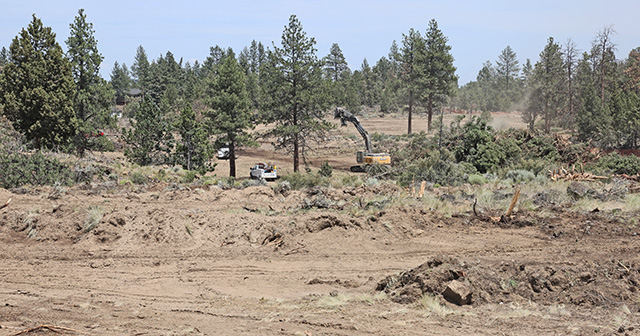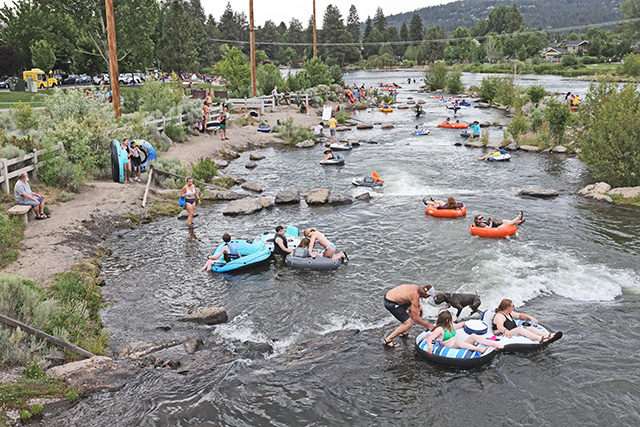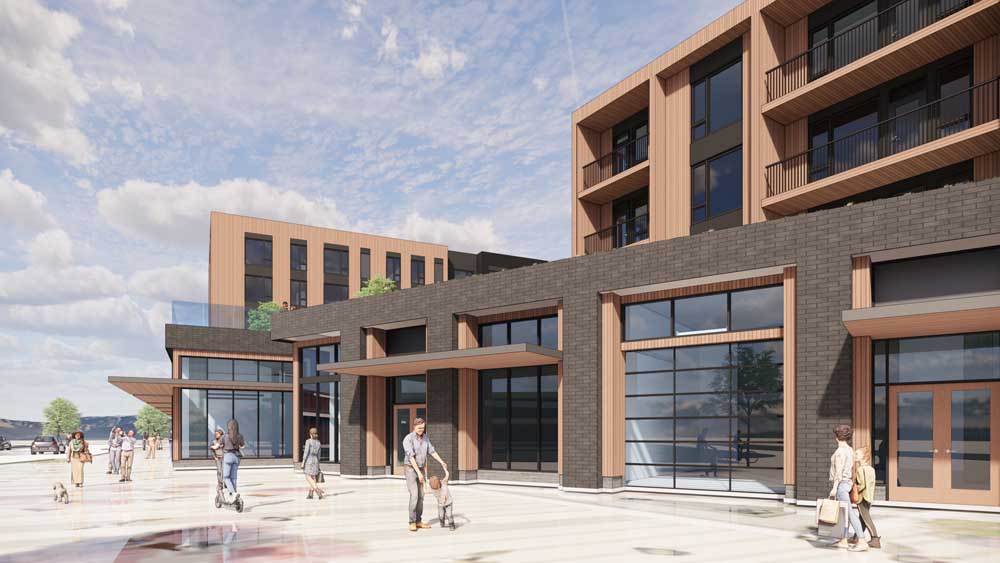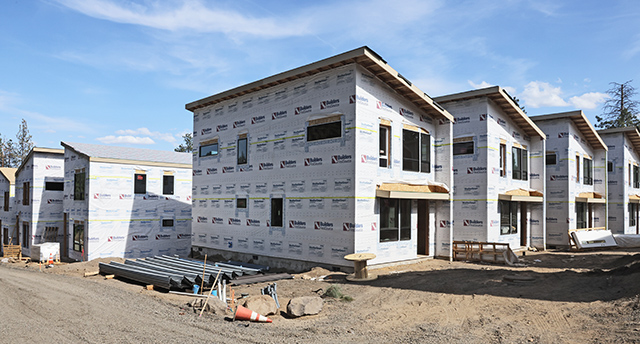Learning how to skate ski
Published 5:36 am Thursday, March 23, 2017
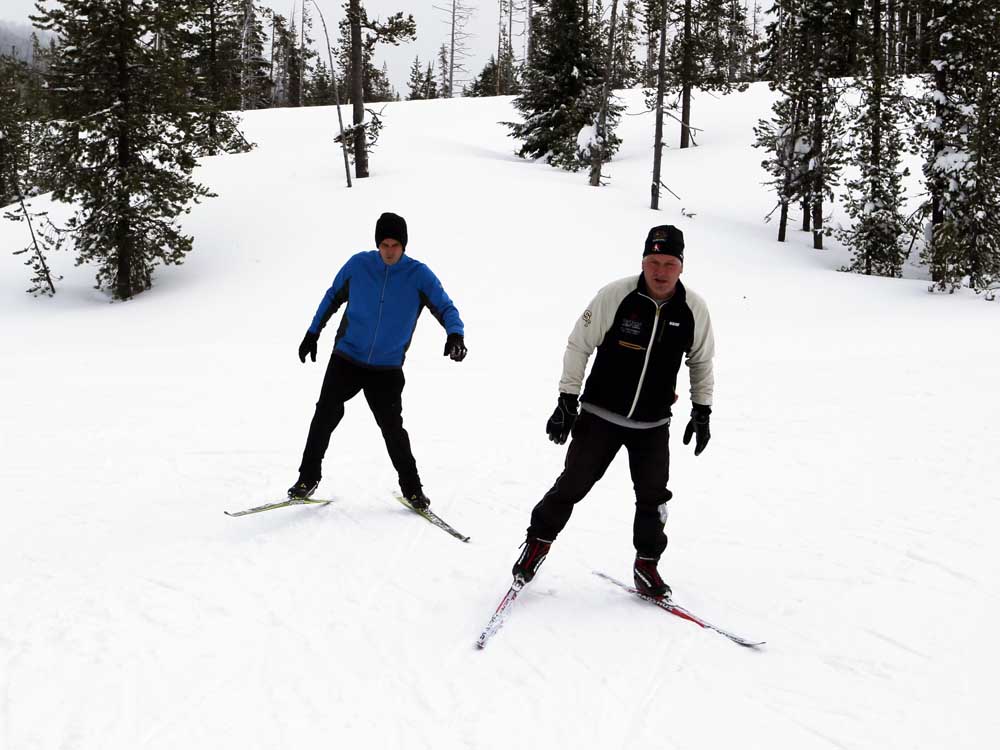
- The Bulletin outdoors writer Mark Morical, left, learns to skate ski under the instruction of MBSEF nordic ski coach Dan Simoneau at the Mt. Bachelor Nordic Center last week. (Andy Tullis/Bulletin photo)
Tired of watching other cross-country skiers speed by me on the groomed trails, I finally decided to take the plunge and try skate skiing.
I’m not sure what took me so long to attempt the discipline, except that adding yet another hobby would seem almost overwhelming. Maybe I was afraid I would like it too much and feel the need to buy all the necessary gear.
Cross-country skiing was not a sport I had considered until a few years ago, when I inherited some old classic ski gear. Since then I have taken to the trails at Virginia Meissner Sno-park and Mt. Bachelor Nordic Center several days each winter.
But those fast skate skiers had me yearning for something different.
Skate skiing is typically performed on a wide-open groomed trail and involves a V-step and glide motion, akin to ice skating. Classic skiing is usually done with the skis in set tracks and the skier employing an easier-to-grasp kick-and-glide motion.
Local shop owners seem to agree that classic skiing is still more popular, as it is easier to learn and you can go anywhere because a groomed trail is not necessary. But there is no denying the popularity of skate skiing in Central Oregon, where Lycra-clad fit folks of all ages engage in the full-body, more-bang-for-your-buck workout.
For beginners, learning the correct technique is crucial, so I dialed up somebody who I knew could teach me the right way.
Dan Simoneau is a two-time Olympian in cross-country skiing, and he had a front seat to the evolution of skate skiing by Olympic nordic skiers in the middle to late 1980s. He also is the nordic director for the Mt. Bachelor Sports Education Foundation.
On the drive from Bend to the Mt. Bachelor Nordic Center last week, Simoneau waxed eloquent about the history of skate skiing and why many cross-country skiers prefer the discipline now.
“People like the convenience of it,” Simoneau said. “They can grab their skis and boots and go, and don’t have to worry too much about the wax. For classic skiers, they either have waxless skis that underperform or they have to deal with wax.”
At the nordic center, a light snow was falling serenely as Simoneau took me through the basics.
Without using poles, he showed me how to “stack” my body over each ski with each skate to the left and to the right. This helped me to get the feel of the skating motion and moving my body weight back and forth over each ski.
After a series of drills on that, we moved on to double-poling (pushing with both poles simultaneously). While some might simply jam their poles into the snow and push with their arms, Simoneau noted the finer points of double-poling — specifically that it all starts with your core muscles (upper thighs, abdomen, butt, and lower back).
Simoneau described the “kinetic energy” transferring from my core and up through my shoulders, arms and hands as I double-poled up a slight hill. He told me to purposely engage my core with each pole stroke.
“Bigger muscles to smaller muscles,” he said.
He compared the idea to how softball pitchers get power from their core muscles at the start of their windup before unleashing their pitches.
Simoneau got me skate skiing before I even realized it. After double-poling up the hill he told me to simply keep going and suddenly I was skate skiing along a flat stretch and picking up speed.
Alpine skiers sometimes come to skate skiing naturally, Simoneau noted, because they usually have experience skating on their alpine skis to get back to the chairlifts.
My background in alpine skiing seemed to help, as I felt comfortable on the flat and downhill stretches on skate skis.
Suddenly I found myself at the spot where the Bachelor nordic trails intersect with snow-packed Cascade Lakes Highway. The Three Sisters rose in the distance to the northwest through thin, gray clouds.
“This is one of my favorite places,” Simoneau said.
After briefly enjoying the view, it was back to work to learn the V1 and V2 techniques. In V1, skiers plant their poles on every other skate — for example, just when skating on the right ski. In V2, they plant on every skate, right and left. The V1 technique is best when skiing uphill, while V2 works to maintain balance on the flats.
While Simoneau was explaining this, two other skate skiers swished by us almost effortlessly, making it look easy.
“Some people do it so well and efficiently that it looks like they are in an anti-gravity machine,” Simoneau said.
While I was not that efficient, I did feel somewhat confident as I skated the flat sections and into a rather steep downhill.
Skiing downhill on skate skis is easier than on classic skies because the skate skis are stiffer and torsionally constructed, Simoneau explained. They have no edges on which to carve, but I had significantly more control on the downhill while skate skiing.
Skate ski boots are stiffer, too, allowing the skier to push off to the side on each ski while skating.
We circled back on the groomed trails and up the final hill to the nordic center, my first attempt at skate skiing complete.
The hefty snowpack this winter should keep the cross-country ski trails in decent shape well into spring. And Simoneau and MBSEF (www.mbsef.org) will offer beginner skate ski clinics this spring for those preparing for May’s Pole Pedal Paddle race, or for those who simply want to learn the proper technique.
But be careful, you just might find yourself hooked on the sport, like me.
Shoot, now I guess I’ll have to go buy the gear.
— Reporter: 541-383-0318,
mmorical@bendbulletin.com
“People like the convenience of (skate skiing). They can grab their skis and boots and go, and don’t have to worry too much about the wax.”— MBSEF nordic director Dan Simoneau


